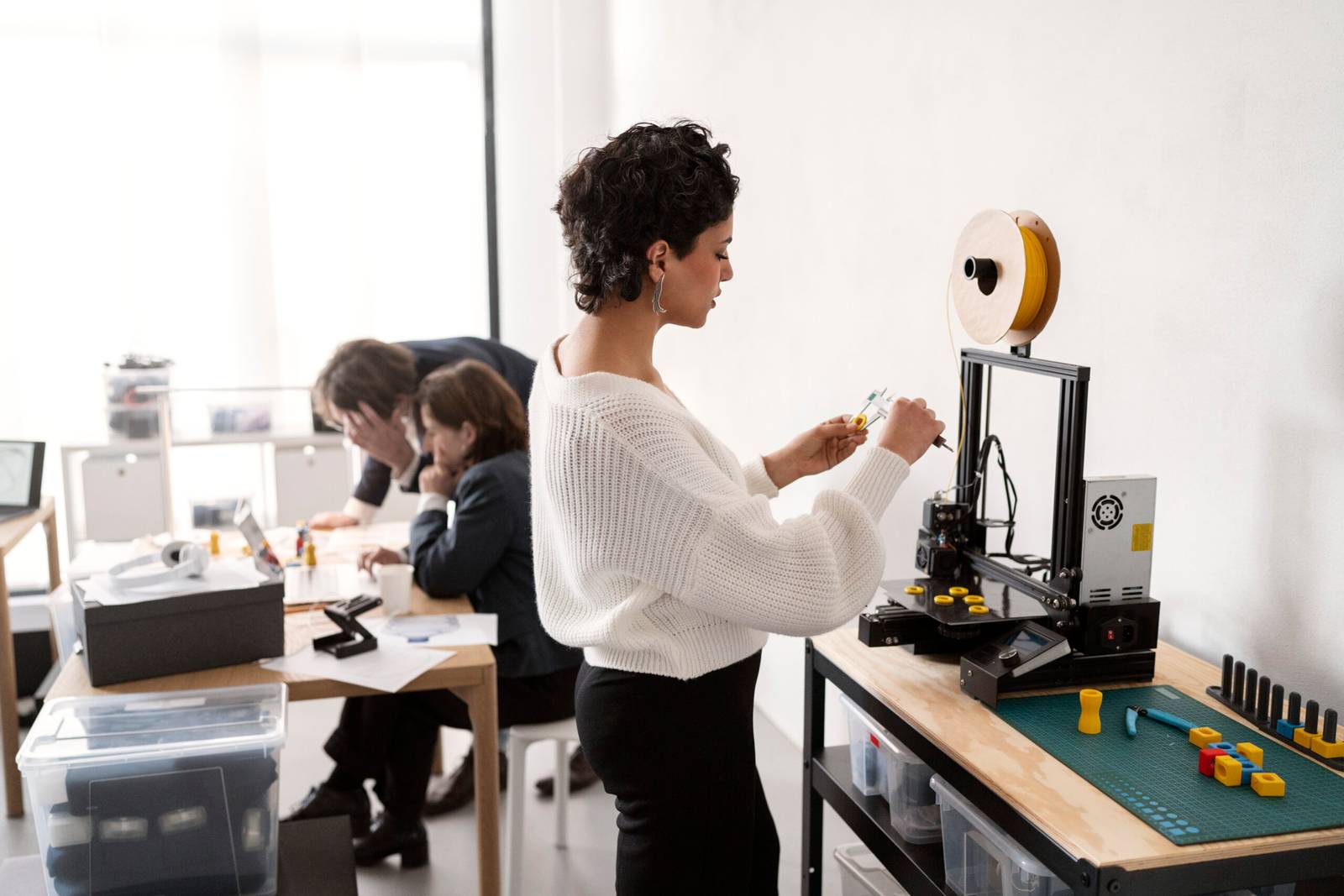Challenges and Opportunities in 3D Printing Technology

by Web Digital
In recent years, 3D printing technology has transformed from a novel concept into a powerful and versatile tool with the potential to revolutionize various industries. From manufacturing to healthcare and aerospace, the applications of 3D printing are expanding rapidly. However, along with its tremendous opportunities, this technology also presents several challenges. In this article, we will explore the challenges and opportunities that lie within the realm of 3D printing technology.
Opportunities in 3D Printing
1. Customization and Personalization:
One of the most significant advantages offered by 3D printing is the capability to produce highly customized and personalized products. This is particularly valuable in the healthcare industry, where 3D printing is used to create patient-specific implants, prosthetics, and dental devices. It also extends to consumer goods, where individuals can have personalized items like phone cases or jewelry made to their exact specifications.
2. Rapid Prototyping:
In the world of product development, 3D printing offers a game-changing opportunity for rapid prototyping. Engineers and designers can quickly create physical prototypes of their designs, allowing for faster iterations and improvements. This significantly reduces the time and costs involved in development.
3. Complex Geometries:
3D printing enables the creation of intricate and complex geometries that are difficult or impossible to achieve with traditional manufacturing methods. This has applications in aerospace, where lightweight and complex parts can be designed for improved fuel efficiency, and in architecture, where innovative and artistic designs can be brought to life.
4. Reduced Material Waste:
Conventional subtractive manufacturing processes frequently lead to substantial material waste. In contrast, 3D printing is an additive process, meaning that material is deposited only where needed, significantly reducing waste. This sustainability aspect is a crucial opportunity for industries striving to be more environmentally conscious.
5. Supply Chain Optimization:
3D printing has the potential to revolutionize supply chains by enabling on-demand production. This reduces the need for extensive warehousing and transportation, making supply chains more efficient and cost-effective.
Challenges in 3D Printing
1. Materials and Quality Control:
While 3D printing offers a wide range of materials, achieving consistent quality and reliability can be challenging. Variations in material properties can lead to defects and inconsistencies in printed parts. Ensuring quality control is a critical challenge that the industry continues to address.
2. Speed and Scalability:
Although 3D printing excels in rapid prototyping, it is generally slower than traditional manufacturing methods when it comes to mass production. Scaling up 3D printing for high-volume production remains a challenge, especially for industries like automotive and electronics.
3. Intellectual Property and Regulations:
With the increasing accessibility of 3D printing, concerns about intellectual property (IP) infringement have arisen. The ease of replicating objects raises questions about copyright and patent violations. Additionally, regulatory challenges exist in industries like healthcare, where ensuring the safety and efficacy of 3D-printed medical devices is paramount.
4. Post-Processing Requirements:
Many 3D-printed objects require post-processing to achieve the desired finish and mechanical properties. This adds extra time and cost to the production process and can be a barrier to adoption in some industries.
5. Lack of Standards:
The 3D printing industry lacks uniform standards and specifications, which can make it challenging to ensure consistency and interoperability across different machines, materials, and software. The establishment of industry standards is an ongoing effort to address this challenge.
6. Cost of Equipment and Materials:
While the cost of 3D printing equipment has decreased over the years, high-quality industrial-grade machines can still be expensive. Similarly, specialized materials can be costly, which may limit adoption in some industries, particularly smaller businesses.
7. Environmental Impact:
Despite its potential for reducing waste, 3D printing also has environmental challenges. The production and disposal of certain 3D printing materials can have environmental consequences, and the energy requirements of some 3D printing processes need to be carefully managed.
Opportunities and Challenges in Specific Industries
1. Healthcare:
Opportunity: Personalized medical devices, prosthetics, and implants that improve patient outcomes.
Challenge: Ensuring regulatory compliance and patient safety in 3D-printed medical products.
2. Aerospace:
Opportunity: Lightweight and complex parts that enhance fuel efficiency and reduce aircraft weight.
Challenge: Ensuring the structural integrity and safety of 3D-printed aerospace components.
3. Automotive:
Opportunity: Rapid prototyping for design iterations and customized parts for vehicle production.
Challenge: Achieving cost-effective high-volume production with 3D printing.
4. Consumer Goods:
Opportunity: Customized and unique consumer products.
Challenge: Meeting consumer demand for rapid production and affordable prices.
5. Construction:
Opportunity: Rapid and cost-effective construction of complex structures.
Challenge: Ensuring the durability and safety of 3D-printed buildings and infrastructure.
6. Education:
Opportunity: Enhancing STEM education through hands-on learning with 3D printing.
Challenge: Providing access to 3D printing technology and resources in educational institutions.
Conclusion
The world of 3D printing is a realm of tremendous opportunities and evolving challenges. As technology continues to advance, addressing these challenges becomes essential to fully realize the potential benefits of 3D printing across various industries. The key lies in collaboration between industry stakeholders, regulatory bodies, and innovators to create a future where 3D printing is a reliable, sustainable, and transformative force in manufacturing and beyond.
Recommended Posts

Web Design Trends in Toronto for 2025
September 12, 2025


